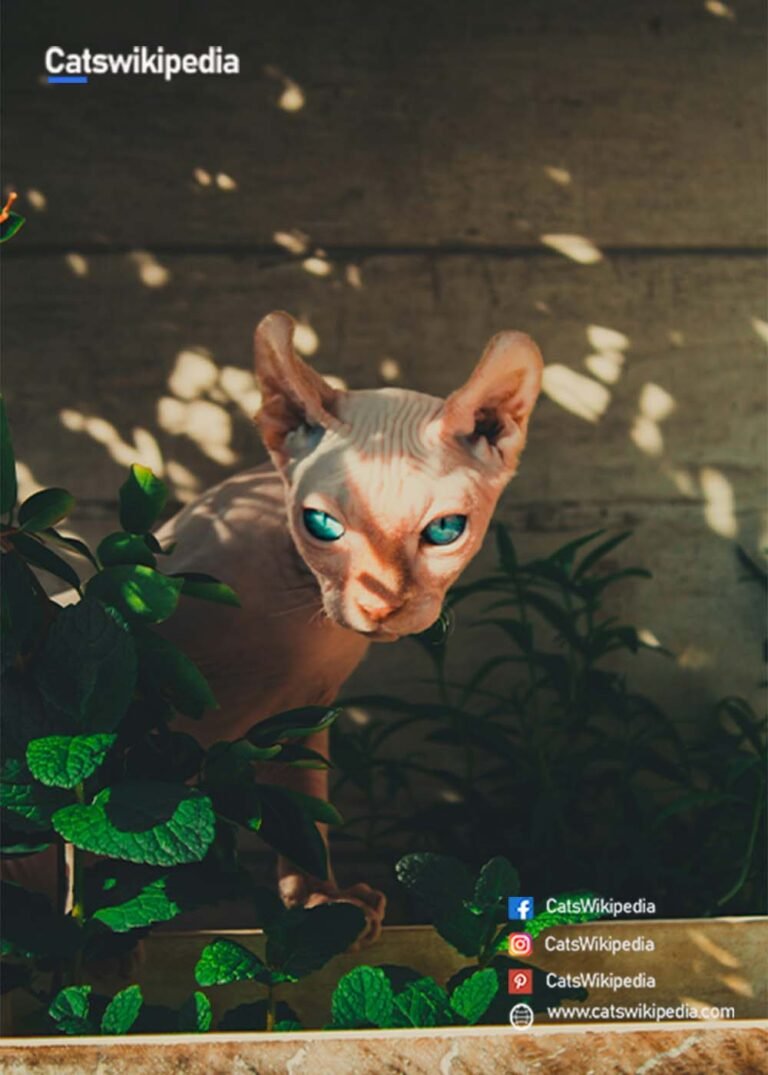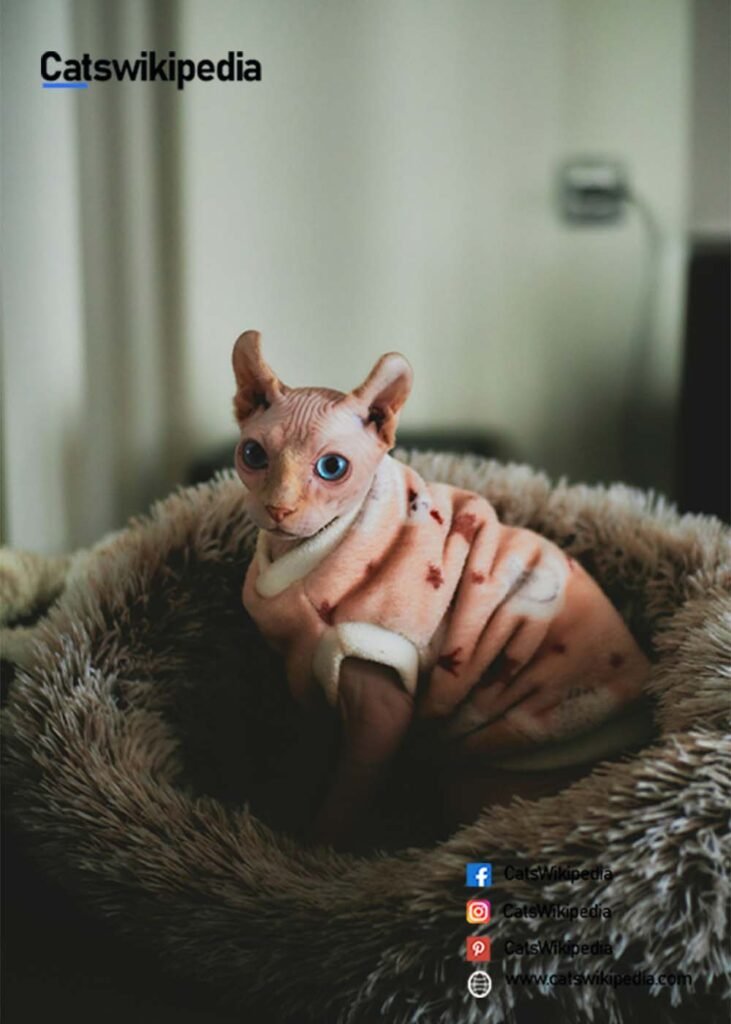Elf Cat
Elf Cat: Breed Overview, Characteristics & Care Appearance, Sensitivity, History, Care, & Advice for Pets Owners
The elf cat is a relatively new and exotic breed of a cross between the American curl and the sphynx with its naked body and characteristic curved ears. These strong, muscular cats are known for their casual love of leaping through play and as highly socialized, smart creatures. They do not necessarily need to be brushed, but their grooming will sometimes be a problem as there is no fur. Therefore, they need some kind of special cleaning techniques. As the breed is relatively new, many things still have to be unraveled regarding elf cats, but don’t worry because they make beautiful pets and commit themselves for a long time.
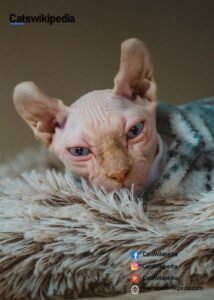
Characteristics of the Elf Cat
They are friendly and nice creature that easily blends with all family systems and household settings. It also gets along very well with other pets in the house. Playful and inquisitive, they tends to be bold in gaining attention. They love owners who can offer them much care and attention. Potential owners should prepare to have their pets climbing long things, thus requiring some fun play areas and high places to lounge on.
Elf cats mature at an age of one year. The cat is light-hearted, so it requires constant activity to be maintained fit. With their medium trainability, such a cat can learn tricks and commands regularly. More than that, They are very vocal creatures which are good at stating their requirements and emotions. They shed minimally so that the living space becomes clean and livelier for those who are concerned about the cleanliness of the place of living.
Originating History of the Elf Cat
They are a relatively recent breed as the actual sire and dam had only bred once before. A distinction has to be made between the two foundation cats who were crossed in 2004, producing an elf cat with curly ears while maintaining the character and look of her respective beloved sphynx cats, Karen Nelson and Kristen Leedom, who united in 2004 to create the breed. They are hairless with curled ears successfully crossed from the American curl and sphynx breeds.
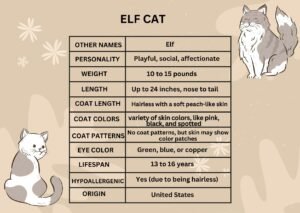
In less than 20 years since the cat was born, elf cats have already gained popularity. In fact, they are already popular in TICA cat shows. However, the elf cat is considered a hybrid and not as a variation of sphynx.
Pet Care for Elf Cats
Knowing how to care for your cat will make life much easier for your feline. Though the activity needs of an these cats are pretty low, unlike their furred brethren, a hairless cat demands significantly more maintenance.
Exercise
These are just as active as any other house cats. Again, recall that hairless breeds are house cats. Ensure their playing area is stimulating. While it is recommended your cat play vigorously for fifteen minutes a day, setting up areas in which it can climb and jump on its own will also allow it to burn some of its pent energy.
Shedding
The owners of these cats can forget about shedding as these cats do not have hair. Even though your cat is hairless, though, it still creates dander. Although a hairless cat is nearly hypoallergenic, its owner, sensitive to allergens, may still have problems.
Grooming
Even though they don’t have fur, they have to be bathed and cleaned regularly. It is essential to clean the skin of secretions via regular grooming. Otherwise, an elf cat can develop several kinds of skin problems, or it will become sticky to the touch. Although, due to the many folds on their bodies, hairless cats cannot reach some crevices for cleaning. However, they do some self-grooming, in addition to that. Another reason you should take care of your cat’s skin is that hairless cats are prone to severe sunburns. So be sure to moisturize your elf cat with a chemical-free cream containing SPF.
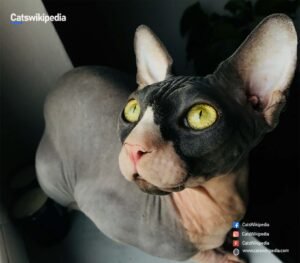
Common Health Problems
Even though it is quite a healthy breed, it still possesses a large number of unknown genetic health problems. The most common health problems they have are due to their hairless coat.
Skin problems
These skin conditions are more probable since hairless cats do not have any coat. Some of the outcomes of rashes, infections, and increased susceptibility to skin injuries might be the collection of oil. It is more susceptible to sunburns and post-proliferative skin cancer than its sphynx ancestor.
Ear infections
Ear infections occur quicker in hairless cats and need frequent cleanings of ears.
Body Temperature Regulating Problems
Hairless cats have trouble regulating their body temperature. Be sure your cat has a sweater and a very warm place in which to curl up this winter.
Appearance
In addition to the sphynx, an elf cat is typically medium to large in size, with well-defined cheekbones and a muscular, athletic physique. The eyes tend to be a shimmering, beautiful blue to gold. They have no hair. The skin of these cats tends to be wrinkled around the ears, shoulders, and nose. The whiskers and eyebrows on the elf cat are small and sparse. Its pointed ears curl backward, likely due to some kind of genetic mutation. Some of the ear furnishings are missing because of this mutation. Apart from the ears, the rest of the elf cat’s physical characteristic is almost the same as its sphynx parent.
As the cat is quite young, there is no breed standard. It means that the elf cat colors and patterns in their varieties are considered normal.
Nutrition and Diet
Calorie expenditure is pivotal for bare skin cats to maintain appropriate body temperatures. Therefore, the elf cat needs to eat many calories so that it can keep itself warm. Owners of elf cats should be aware that the American curl and sphynx are known to have voracious appetites, and giving healthy well-balanced food is very important. To find out how suitable food is for your cat, consult your veterinarian.
Where to Get or Adopt an Elf Cat
Elfs are a rare breed, and it is much easier to wait for them in rescue. If you are willing to shell out more than $2000 for a cat, then you must see an elf cat breeder.

Elf Cat: Summary
The amiable, entertaining them is a great friend. However, because of its uniqueness, you might have problems finding one. For cat owners with allergies, the elf’s hairlessness is an excellent alternative, but it also means more frequent maintenance. Consider all the material before determining whether or not an elf cat is the ideal pet for you.
FAQs about Elf Cats
1- What is an elf cat?
Generally, an Elf is a relatively new and rare cat breed defined by its hairlessness and curly ears. Being a hybrid breed, the Elf cat bridges two breeds: the American Curl and Sphynx to give rise to some very distinct personality and physical characteristics.
2- How do you care for the grooming needs of an Elf cat?
They do not have hair, but they still need daily grooming to keep the skin on their body looking good. This includes ensuring they get showers regularly to clean off dirt and oils and to clean their ears so infections cannot take hold. As these cats do not have fur, elf cats are also prone to sunburn, so some will need moisturizing with pet-safe sunscreen.
3- What are some common health issues in elf cats?
Even though these animals are generally healthy, their hairless coat does make them prone to some health problems, including skin problems (such as rashes and infections), infections of the ears due to the structure of their weird-looking ears, and body-temperature regulating problems. To help prevent problems, owners should monitor their skin closely and provide the appropriate environment.
4- Do Elf cats have low allergen levels?
They are often considered hypoallergenic because they do not have the typical fur which collects allergens. They still produce dander however, and such sensitive people might also become allergic to it. It is recommended that the cat and its environment should be cleaned from time to time to lessen its exposure to allergens.
5- Where can I get or adopt an Elf cat?
They are not common, not found in rescues or shelters. Because they are a rare breed and have specific needs within breeding, it may cost more than $2000. So, interested buyers would typically get in touch with a knowledgeable breeder. It’s worth doing some research to find responsible breeders that care about the health and welfare of their feline friends.

